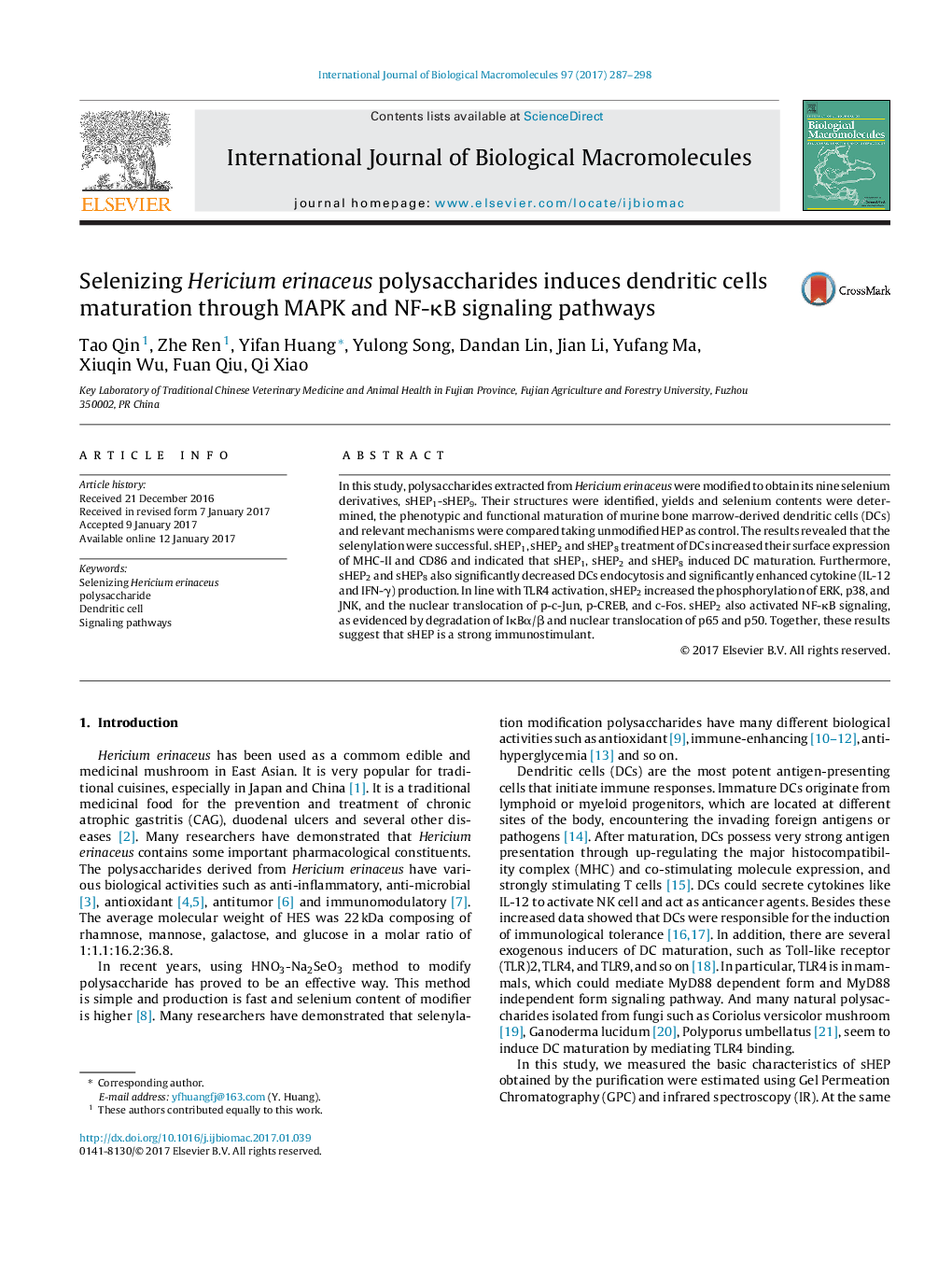| Article ID | Journal | Published Year | Pages | File Type |
|---|---|---|---|---|
| 5512602 | International Journal of Biological Macromolecules | 2017 | 12 Pages |
â¢Nine selenizing Hericium erinaceus polysaccharide, sHEP1-sHEP9, were prepared.â¢sHEP treatment stimulated DCs to secrete cytokines that promote TH1 responses.â¢sHEP enhance the MAPK and NF-κB signaling downstream of TLR4.
In this study, polysaccharides extracted from Hericium erinaceus were modified to obtain its nine selenium derivatives, sHEP1-sHEP9. Their structures were identified, yields and selenium contents were determined, the phenotypic and functional maturation of murine bone marrow-derived dendritic cells (DCs) and relevant mechanisms were compared taking unmodified HEP as control. The results revealed that the selenylation were successful. sHEP1, sHEP2 and sHEP8 treatment of DCs increased their surface expression of MHC-II and CD86 and indicated that sHEP1, sHEP2 and sHEP8 induced DC maturation. Furthermore, sHEP2 and sHEP8 also significantly decreased DCs endocytosis and significantly enhanced cytokine (IL-12 and IFN-γ) production. In line with TLR4 activation, sHEP2 increased the phosphorylation of ERK, p38, and JNK, and the nuclear translocation of p-c-Jun, p-CREB, and c-Fos. sHEP2 also activated NF-κB signaling, as evidenced by degradation of IκBα/β and nuclear translocation of p65 and p50. Together, these results suggest that sHEP is a strong immunostimulant.
